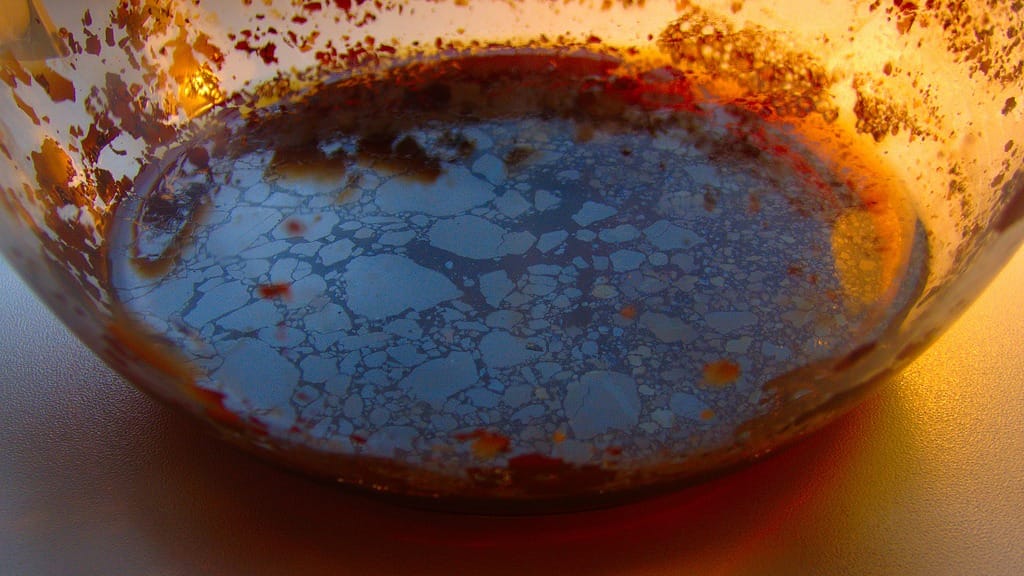Scum on the tea from a teasmade

Goblin occasionally received complaints about scum floating on the surface of the tea. Complaints peaked in 1971 when Goblin introduced a new type of teapot with a large open spout and no grill. The sudden influx of queries from the service department forced them to devote some of their not inconsiderable resources to understanding and hopefully minimising the problem.
In June 1971 they wrote to the Institute of Water Engineers, the Water Research Association, the Society of Water Treatment and Examination, and the Metropolitan Water Examination Department. Having gathered together the information provided by these bodies, on 7th July 1971 Goblin’s chief engineer, Mr D M Barber, drafted a reply to such complaints.
"Herewith a suggested explanation to embody in the letter to a customer who has complained of scum deposit on tea from teasmades.
Hard water contains calcium dicarbonate in solution. When the water is boiled this dicarbonate is reduced to a single carbonate, commonly called chalk, which is insoluble and appears in the water as a very finely divided white powder. Some of this powder floats on the surface of the water and the larger proportion sinks to the bottom.
When the boiling water is transferred to the teapot from the kettle, the powder is transferred with it, and a proportion of it floats on the surface of the tea and becomes dyed to the colour of the tea, appearing as brown scum. This scum, although unsightly, is quite innocuous and flavourless.
This effect is present in the case of a conventional kettle and teapot but is reduced by the fact that the spout in the usual type of kettle or teapot emerges from the side of the receptacle some distance from the top. When this type of pot is tilted to pour out, the liquid is poured from the middle area of the liquid it contains, and consequently, the calcium deposits at the bottom and top of the liquid remain in the kettle or teapot until the last. In the case of the Teasmade, you will note that the water in the kettle is transferred from near the bottom, thereby transferring some of the deposit in the boiled water which has settled to the bottom. The spout of the Tesmade teapot emerges from the top of the body of the pot, consequently, when tea is poured from it into a cup, the floating deposit is transferred, giving rise to the appearance of scum as described above.
We trust that this explanation will serve to reassure you that the effect of which you complain is in no way due to the surface finish or cleanliness of the kettle or teapot of your Teasmade."
Mr Barber made two other observations in an internal report. Firstly, that the problem is worsened by the fact that the user generally refills a kettle without tipping out the water remaining in it from the previous boiling. Secondly, that the water in a teasmade kettle typically stands for at least eight hours, thus losing carbon dioxide and precipitating calcium carbonate long before the boiling operation begins.
The Director of Water Examination at the Metropolitan Water Board was more specific about the effects of tea, stating that the essential oils from the leaf are eluted and tend to consolidate the floating material. He also pointed out that adding milk considerably worsens the effect. He was not aware of any research to confirm or deny that problems could be caused by the position of the spout.
